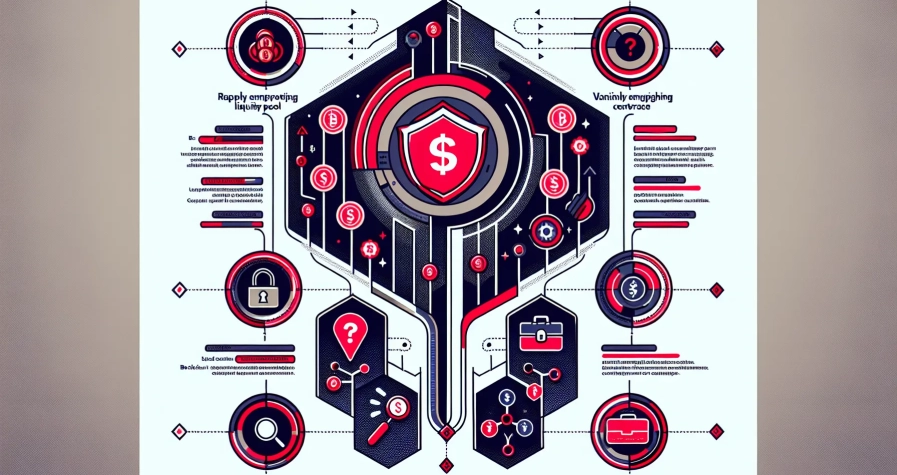Gas fees can quickly drain your wallet when you’re sending ETH regularly. These network charges fluctuate dramatically throughout the day and can sometimes cost more than the actual transaction you’re trying to make. If you’ve ever watched your hard-earned crypto disappear into mining fees you’ll know how frustrating this can be.
The good news? You don’t have to accept sky-high gas costs as inevitable. With the right timing strategies and smart transaction techniques you can slash your ETH transfer fees by up to 90%. Another advantage is that some platforms and DeFi protocols offer gas fee discounts or incentives, giving you an extra edge in reducing costs. Whether you’re a casual sender or someone who moves crypto frequently understanding these cost-cutting methods will save you serious money.
From timing your transactions perfectly to using layer-2 solutions there are proven ways to keep more of your ETH in your pocket where it belongs. You can also consider alternative blockchains like Solana, Avalanche, or Sui, which offer lower fees and faster transactions compared to Ethereum. These alternative networks are particularly appealing to NFT users seeking cost efficiency.
Understanding Ethereum Gas Fees
Ethereum gas fees represent computational costs required to process transactions on the blockchain network, and are essential for maintaining the security and functionality of blockchain networks. These fees compensate miners and validators for the energy and resources they expend to verify and execute your transactions. The computing power required for transaction processing directly impacts gas fees. Gas price at any moment is determined based on block space supply and demand.
What Are Gas Fees and Why Do They Exist
Gas fees function as payment for computational work performed on the Ethereum network. Each transaction requires a specific amount of computational power measured in gas units, which translates to ETH costs.
Ethereum implements gas fees to prevent spam attacks and maintain network security. Without transaction costs, malicious actors could overwhelm the network with countless meaningless transactions, rendering the blockchain unusable for legitimate users. Gas fees are essential for maintaining the integrity and security of the entire system.
The fee structure incentivises efficient smart contract programming and discourages wasteful network usage. Developers optimise their code to minimize gas consumption and transaction costs, whilst users prioritize essential transactions during high-demand periods. Access to developer resources and tools, such as the Developer Hub, is crucial for developers aiming to optimize gas usage and minimize expenses.
Gas fees also regulate network congestion by creating a marketplace where users bid for transaction priority. Higher fees typically result in faster transaction processing, whilst lower fees may cause delays during busy periods.
Factors That Influence Gas Prices
Network congestion drives the primary factor affecting gas prices across the Ethereum ecosystem. Congestion affects not only Ethereum but also other chains, each with their own fee structures and scalability considerations. During peak usage periods such as NFT launches, DeFi protocol updates, or major market movements, transaction demand increases dramatically, pushing gas prices upward.
Transaction complexity directly impacts gas consumption requirements for your operations. Simple ETH transfers consume approximately 21,000 gas units, whilst complex smart contract interactions can require 100,000+ gas units depending on the computational steps involved. More gas is required for complex or high-demand transactions, especially when network activity is elevated.
Transaction Type | Typical Gas Units | Relative Cost |
|---|---|---|
Basic ETH transfer | 21,000 | Low |
Token swap (Uniswap) | 150,000 | High |
NFT purchase | 80,000-120,000 | Medium-High |
Smart contract deployment | 200,000+ | Very High |
Base fee fluctuations occur every 15 seconds through Ethereum’s EIP-1559 mechanism, which adjusts fees based on network utilisation. Block fullness determines whether the base fee increases or decreases for subsequent transactions. The Ethereum upgrade EIP-1559 introduced a ‘base fee’ that fluctuates based on network demand.
Priority tips (miner tips) create additional cost variations as users compete for faster transaction processing. These optional payments incentivise validators to include your transaction sooner, particularly during congested network conditions.
Gas price volatility peaks during coordinated events such as token launches, protocol governance votes, or major DeFi yield farming opportunities when thousands of users simultaneously attempt transactions. Many users competing for limited block space drive up gas prices. The supply of block space is limited, and when demand exceeds supply, gas fees increase. Ultimately, gas fees are determined by the basic economic principle of supply and demand.
Timing Your ETH Transactions
Gas prices fluctuate dramatically throughout the day and week based on network demand. Strategic timing reduces your transaction costs by 25-40% compared to peak periods without requiring technical expertise. By choosing the right time to transact, you can save money on gas fees.
Using Gas Price Trackers
Gas price trackers monitor real-time Ethereum network congestion and display current gas prices in gwei. EtherScan provides comprehensive tracking data that enables you to identify optimal transaction windows when fees drop significantly. These tools eliminate guesswork by showing precise gas price trends and historical patterns.
You can set up alerts on most tracking platforms to notify you when gas prices fall below specific thresholds. Popular trackers include:
- EtherScan for detailed gas analytics
- GasNow for real-time price monitoring
- ETH Gas Station for predictive pricing models
- GasTracker for mobile notifications
Most crypto wallets also provide built-in gas fee estimation and tracking features, allowing users to manage transaction costs directly within the wallet interface.
Best Times to Send ETH
Late night and early morning hours consistently offer the lowest gas fees across all time zones. Weekend transactions typically cost 30-35% less than weekday business hours due to reduced commercial activity on the network. Transaction fees are often highest during peak business hours in the US and Europe and lowest during weekends or early mornings (UTC).
By choosing the right time to send ETH, you don’t need to worry about unpredictable gas fees.
Optimal timing windows include:
- Saturday and Sunday mornings (UTC 06:00-10:00)
- Weekday late nights (UTC 02:00-06:00)
- Holiday periods when trading volumes decrease
Avoid these high-congestion periods:
- Weekday business hours (UTC 14:00-18:00)
- Popular NFT mint launches and token sales
- Major DeFi protocol updates or airdrops
- Market volatility periods with increased trading
Scheduling your transactions during these low-demand windows maximises your savings whilst ensuring reliable transaction processing. Monitor gas trackers for at least 24 hours before large transfers to identify recurring price patterns specific to your preferred transaction times.
Choosing the Right Gas Settings
Gas settings control your transaction costs and processing speed on the Ethereum network. Crypto wallets provide interfaces for adjusting gas settings and managing transaction fees, allowing users to estimate gas costs, set transaction priorities, and pay fees in native tokens like ETH. The transaction fee is the amount paid to validators for processing your transaction. Understanding these parameters helps you save up to 90% on gas fees whilst maintaining reliable transaction execution.
Setting Custom Gas Limits
Gas limits represent the maximum computational energy you’re willing to spend on a transaction. The gas limit sets the maximum amount of gas (in gwei) you are willing to pay for a transaction, ensuring it gets processed without failing due to insufficient gas. Your wallet typically suggests appropriate limits based on transaction type, but customising these settings prevents overpayment and failed transactions.
ETH Gas Station and similar tools estimate optimal gas limits for different operations. Standard ETH transfers require approximately 21,000 gas units whilst smart contract interactions demand between 50,000 and 200,000 units depending on complexity.
Setting excessive gas limits wastes money even though unused gas gets refunded after transaction completion. Conversely, insufficient gas limits cause transaction failures and you lose the entire gas fee without successful execution.
Modern wallets offer maximum fee caps (‘max fee per gas’) to prevent unexpected cost spikes during network congestion. This feature protects you from paying more than planned whilst ensuring transaction processing when gas prices fluctuate.
Understanding Gas Price vs Transaction Speed
Gas price determines how quickly miners prioritise your transaction for inclusion in blocks. Higher prices typically result in faster processing but increase overall transaction costs significantly.
Network congestion directly affects gas price dynamics. During peak periods, gas prices can exceed 100 gwei compared to 10-20 gwei during quiet hours. This represents a 5-10x cost difference for identical transactions.
Non-urgent transactions benefit from lower gas prices as you’re willing to wait longer for confirmation. However, extremely low prices risk transaction reversion if network conditions change before processing occurs.
Layer-2 solutions like Polygon and Arbitrum process transactions off-chain before settling on Ethereum mainnet. These networks reduce gas costs by over 90% whilst maintaining security benefits of the main network. By using these solutions, users can pay only a fraction of the usual fees. Gas fees are paid in the network’s native token, such as ETH for Ethereum. Arbitrum and Optimism are examples of Layer-2 solutions that reduce gas fees by processing transactions off-chain before syncing them to Ethereum.
Batching multiple operations into single transactions reduces per-operation overhead costs. Gas tokens allow prepaying cheaper gas during low-demand periods, storing value for future use when network congestion increases prices.
Layer 2 Solutions and Alternative Methods
Layer 2 solutions offer the most effective approach to dramatically reduce ETH gas fees by processing transactions off the main Ethereum blockchain. Different blockchain networks have varying fee structures and transaction speeds, which can impact the overall user experience. These advanced methods can cut your transaction costs by up to 90% whilst maintaining the security benefits of the Ethereum network. NFT marketplaces often integrate Layer 2 solutions to reduce gas fees for minting and trading NFTs. Gas fees on these networks are typically paid using the network’s native token.
Using Layer 2 Networks
Layer 2 networks process your transactions off-chain before settling them on Ethereum’s main layer, creating substantial cost savings for ETH transfers. Ethereum’s mainnet acts as the primary settlement layer where all transactions are ultimately validated and finalized. Users execute transactions on Layer 2 networks, benefiting from lower fees and faster processing, before these transactions are finalized on Ethereum’s mainnet.
Popular L2 solutions like Optimism, Arbitrum, and zk-rollups handle thousands of transactions efficiently by bundling them together and submitting periodic updates to the main Ethereum blockchain.
Optimism reduces gas fees through optimistic rollups that assume transactions are valid unless proven otherwise, allowing faster processing with lower computational requirements. You can transfer ETH on Optimism for approximately 95% less than mainnet costs whilst maintaining full Ethereum security guarantees.
Arbitrum employs similar rollup technology but processes transactions through a different validation mechanism, often providing even lower fees for complex smart contract interactions. The network handles ETH transfers at roughly 1/10th the cost of Ethereum’s base layer during peak congestion periods.
zk-rollups like Polygon’s zkEVM and StarkNet utilise zero-knowledge proofs to validate transactions mathematically, offering instant finality with minimal gas consumption. These solutions excel for high-frequency ETH transfers where immediate settlement isn’t required—much like how the Lightning Network enables fast, low-cost transactions for Bitcoin.
Layer 2 Network | Average ETH Transfer Cost | Processing Time | Security Model |
|---|---|---|---|
Optimism | £0.01-£0.05 | 1-2 seconds | Optimistic rollup |
Arbitrum | £0.01-£0.03 | 1-2 seconds | Optimistic rollup |
Polygon zkEVM | £0.005-£0.02 | Instant | zk-rollup |
StarkNet | £0.01-£0.04 | Instant | zk-rollup |
Batch Transactions and Smart Strategies
Batching multiple ETH operations into single transactions eliminates redundant gas costs by combining several transfers or interactions. Account abstraction wallets enable you to bundle multiple recipients into one transaction, reducing total gas consumption by 40-60% compared to individual transfers.
Smart contract batching allows you to execute multiple ETH transfers simultaneously through protocols like Disperse.app or custom batching contracts. Instead of paying base transaction fees multiple times, you pay once for the entire batch plus minimal additional gas per recipient.
Gas tokens like CHI and GST2 let you prepay for gas during low-demand periods and redeem the stored value when fees spike. Purchase gas tokens when network usage drops below 50 gwei, then burn them during peak periods to access previously locked-in rates.
Transaction timing strategies complement batching by scheduling your bundled operations during off-peak hours. Combine multiple ETH transfers into batches and execute them during weekends or early morning hours (2-6 AM GMT) when gas prices typically drop 25-40%.
Maximum gas fee settings protect against sudden fee spikes by capping your transaction costs at predetermined levels. Set your max priority fee to 2-5 gwei and base fee limit to current network rates plus 20% buffer, ensuring unused portions get refunded automatically whilst preventing overpayment during congestion surges.
Tools and Resources for Gas Optimisation
Gas optimisation tools provide real-time insights and automated solutions that help you reduce ETH transaction costs significantly. These resources complement the timing strategies and layer-2 solutions you’ve already learnt about.
Recommended Gas Fee Calculators
Real-time gas trackers give you precise visibility into current network conditions and optimal transaction timing. Etherscan Gas Tracker provides comprehensive network congestion data alongside suggested gas prices for slow, standard and fast transaction processing. GasNow offers simplified fee tracking with colour-coded indicators showing whether current rates are low, medium or high compared to historical averages.
ETH Gas Station delivers detailed analytics including average wait times for different gas price levels and transaction success rates. These calculators update every few seconds to reflect changing network conditions, helping you identify fee reduction opportunities of 25-40% compared to peak pricing periods.
Most gas tracking platforms include mobile notifications and browser extensions that alert you when fees drop below your specified thresholds. During network congestion, external gas calculators often provide more accurate predictions than built-in wallet estimators, particularly for complex smart contract interactions.
Wallet Settings and Features
Modern wallets include adjustable gas price and gas limit settings that let you customise fees based on transaction urgency rather than accepting default rates. MetaMask, Trust Wallet and other popular options allow you to set lower gas prices for non-urgent transactions, potentially saving 15-30% on fees whilst accepting longer processing times.
Advanced wallet features include transaction queuing systems that automatically execute pending transactions when gas prices fall to your specified levels. Some wallets integrate with 1inch and Matcha aggregators that optimise transaction routes to minimise gas consumption through efficient DEX routing.
Gas refund programmes through platforms like Balancer offer up to 90% fee rebates when you use their native tokens for transactions. Certain wallets support batch transaction capabilities that combine multiple operations into single blockchain submissions, reducing total gas costs by eliminating redundant network fees for each individual transaction.
Smart wallet implementations include gas estimation algorithms that analyse current network conditions and recommend optimal fee settings based on your transaction type and timing preferences.
Common Mistakes to Avoid
Overpaying for transaction speed represents the most costly mistake you can make when sending ETH. You waste money by selecting maximum gas fees when quick confirmation isn’t necessary for your transaction. Standard transactions such as simple token transfers don’t require premium priority fees that can increase costs by 200-300% during peak congestion periods.
Ignoring gas tracker insights leads to poor transaction timing and avoidable high costs. You miss optimal sending windows by not consulting real-time network conditions through platforms like Gasstation.info or ETH Gas Station. These tools provide accurate fee predictions and help you identify when network congestion decreases, typically saving 25-40% compared to peak hours.
Transacting during high-congestion periods significantly inflates your gas costs without providing additional value. You face premium fees by sending ETH during weekday business hours, major DeFi events, or popular NFT launches when network demand peaks. Weekend transactions and early morning hours consistently offer lower fees due to reduced network activity.
Relying solely on Ethereum mainnet transactions misses substantial cost savings from Layer 2 scaling solutions. You pay 10-100 times more by avoiding platforms like Arbitrum, Optimism, or Polygon that process transactions off-chain whilst maintaining Ethereum’s security standards. These networks reduce gas fees by 90-99% compared to mainnet transactions.
Setting incorrect gas limits causes transaction failures or unnecessary overspending on your ETH transfers. You risk transaction reversion by setting limits too low, whilst excessively high limits result in overpayment for unused computational resources. Before initiating a transaction, always ensure you have sufficient funds in your wallet to cover the required gas fees, as funds will be deducted from your wallet balance to process the transaction. Simple ETH transfers typically require 21,000 gas units, whilst complex smart contract interactions may need 50,000-200,000 units depending on contract complexity. For those seeking ways to address high gas fees and improve scalability, Layer 2 scaling solutions play a key role in reducing costs and increasing transaction throughput on blockchains.
Failing to batch multiple operations increases your total transaction costs through redundant gas fees. You spend more by executing separate transactions for related operations that could be combined into single batch transactions. DeFi protocols and wallet features often support batching capabilities that eliminate duplicate base fees across multiple operations.
Conclusion
You now have the tools and knowledge to slash your ETH gas fees significantly. Whether you’re timing transactions during off-peak hours or leveraging layer-2 solutions you can keep more of your crypto in your wallet rather than paying excessive network fees.
Remember that reducing gas costs doesn’t require advanced technical skills. Simple actions like monitoring gas trackers setting appropriate limits and avoiding peak congestion periods can save you 25-40% immediately. For even greater savings consider exploring layer-2 networks which can cut your fees by up to 95%.
Start implementing these strategies today and you’ll quickly notice the difference in your transaction costs. Your future self will thank you for taking the time to optimise your ETH sending habits.
Frequently Asked Questions
What are Ethereum gas fees and why do they exist?
Ethereum gas fees represent the computational costs required to process transactions on the blockchain. They compensate miners and validators for their resources whilst preventing spam attacks and maintaining network security. Gas fees also incentivise efficient smart contract programming and ensure the network operates smoothly by prioritising transactions based on users’ willingness to pay. Ethereum calculates gas fees dynamically based on three factors: gas units, base fee, and optional tip.
How much can I save by timing my ETH transactions strategically?
Strategic timing can reduce your gas costs by 25-40% compared to peak periods. By monitoring network congestion and scheduling transactions during off-peak hours, you can achieve significant savings without requiring technical expertise. Some advanced techniques combined with layer-2 solutions can reduce fees by up to 90%.
When are the best times to send ETH with lower gas fees?
The lowest gas fees typically occur during late night and early morning hours (GMT), as well as weekends when network activity is reduced. Avoid transacting during weekday business hours, significant market events, or popular NFT drops when network congestion peaks and gas prices surge dramatically.
What are layer-2 solutions and how do they reduce gas fees?
Layer-2 solutions like Polygon, Arbitrum, and Optimism process transactions off the main Ethereum blockchain whilst maintaining security. These networks can reduce gas fees by approximately 95%, making them the most effective method for dramatically lowering ETH transaction costs without sacrificing transaction reliability or security.
Which gas tracking tools should I use to monitor fees?
Popular gas tracking tools include Etherscan Gas Tracker, GasNow, and ETH Gas Station. These platforms provide real-time network congestion data, optimal transaction timing alerts, and mobile notifications when fees drop below your specified thresholds. They offer precise visibility into current market conditions for informed transaction timing.
How do I set the right gas limit for my transactions?
Use tools like ETH Gas Station to estimate optimal gas limits based on your transaction type. Setting custom gas limits prevents overpayment and transaction failures. Standard ETH transfers typically require 21,000 gas units, whilst smart contract interactions may need significantly more depending on complexity.
What common mistakes should I avoid when sending ETH?
Avoid overpaying by selecting maximum gas fees unnecessarily, ignoring gas tracker insights, and transacting during high-congestion periods. Don’t rely solely on Ethereum mainnet when layer-2 solutions offer cheaper alternatives. Always set correct gas limits to prevent failures and consider batching multiple operations to reduce overall costs.
Can I batch multiple ETH operations to save on gas fees?
Yes, batching multiple operations into single transactions eliminates redundant gas costs and can significantly reduce your total fees. Many wallets and DeFi platforms offer batch transaction capabilities that allow you to combine transfers, swaps, or other operations, maximising efficiency whilst minimising individual transaction costs.
Resources
- Etherscan Gas Tracker – Real-time Ethereum gas price tracking and analytics.
- ETH Gas Station – Detailed Ethereum gas fee estimates and transaction success rates.
- Ethereum Foundation – EIP-1559 Explained – Official explanation of the Ethereum gas fee upgrade.
- Optimism – Layer 2 scaling solution for Ethereum to reduce gas fees.
- Arbitrum – Optimistic rollup Layer 2 network offering lower transaction costs.
- Polygon zkEVM – Zero-knowledge rollup Layer 2 network for fast and low-cost Ethereum transactions.
- Avalanche Developer Hub – Resources for developers to build on Avalanche with optimized gas usage.
- MetaMask Wallet – Popular crypto wallet with customizable gas fee settings.
- Disperse.app – Tool for batching multiple ETH transfers into a single transaction to save gas fees.
- 1inch Exchange – DEX aggregator with gas optimization features.
- Matcha – User-friendly DEX aggregator offering efficient transaction routing to minimize gas costs.








